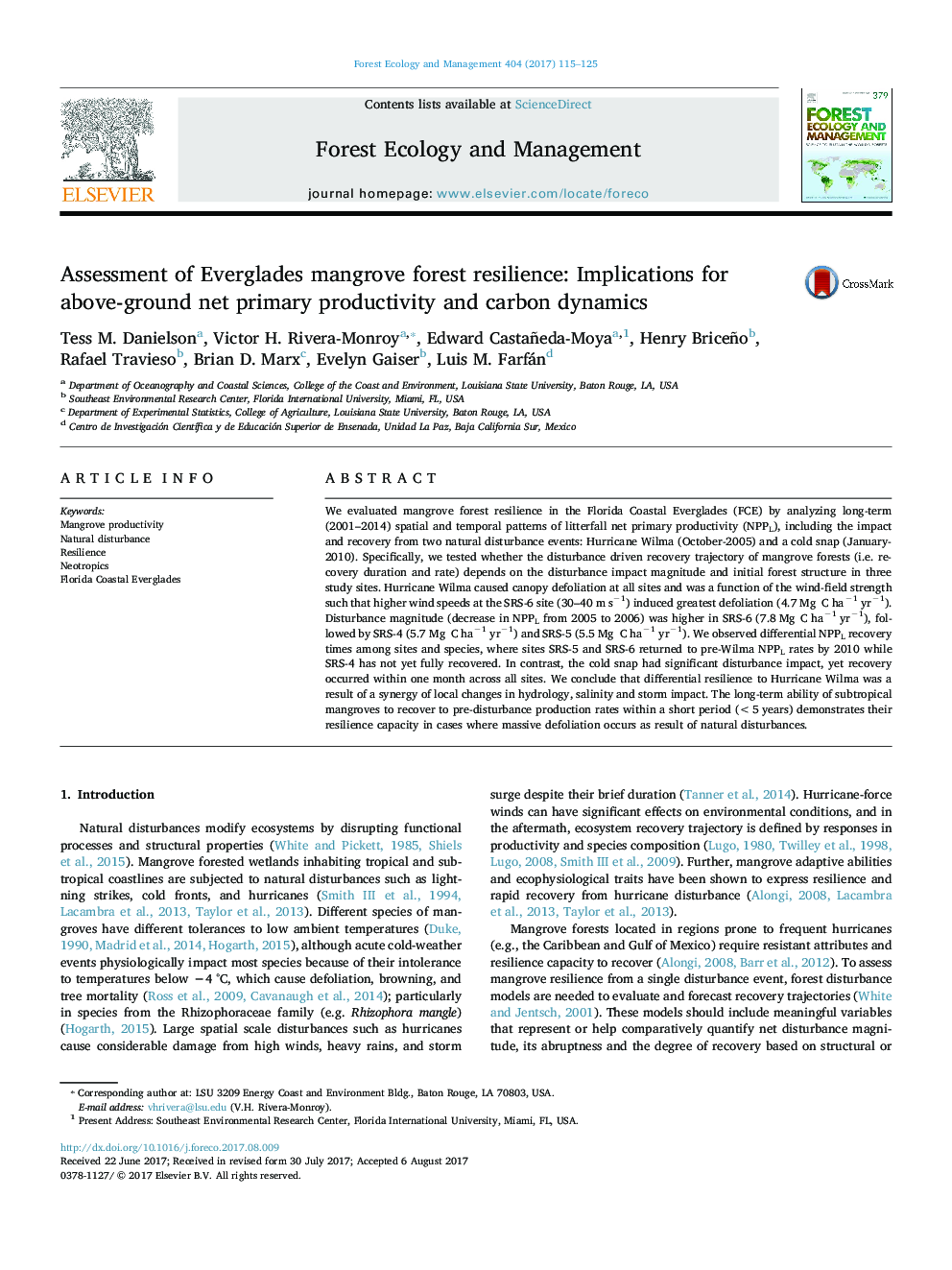| کد مقاله | کد نشریه | سال انتشار | مقاله انگلیسی | نسخه تمام متن |
|---|---|---|---|---|
| 6459148 | 1421354 | 2017 | 11 صفحه PDF | دانلود رایگان |
- We assessed mangrove resilience to large-scale natural disturbances.
- Disturbance impact varied across sites due to hurricane path and wind speed.
- Recovery depended on disturbance magnitude and initial forest structure.
- Resilience was a function of impact, site attributes, and species composition.
We evaluated mangrove forest resilience in the Florida Coastal Everglades (FCE) by analyzing long-term (2001-2014) spatial and temporal patterns of litterfall net primary productivity (NPPL), including the impact and recovery from two natural disturbance events: Hurricane Wilma (October-2005) and a cold snap (January-2010). Specifically, we tested whether the disturbance driven recovery trajectory of mangrove forests (i.e. recovery duration and rate) depends on the disturbance impact magnitude and initial forest structure in three study sites. Hurricane Wilma caused canopy defoliation at all sites and was a function of the wind-field strength such that higher wind speeds at the SRS-6 site (30-40 m sâ1) induced greatest defoliation (4.7 Mg  C haâ1 yrâ1). Disturbance magnitude (decrease in NPPL from 2005 to 2006) was higher in SRS-6 (7.8 Mg  C haâ1 yrâ1), followed by SRS-4 (5.7 Mg  C haâ1 yrâ1) and SRS-5 (5.5 Mg  C haâ1 yrâ1). We observed differential NPPL recovery times among sites and species, where sites SRS-5 and SRS-6 returned to pre-Wilma NPPL rates by 2010 while SRS-4 has not yet fully recovered. In contrast, the cold snap had significant disturbance impact, yet recovery occurred within one month across all sites. We conclude that differential resilience to Hurricane Wilma was a result of a synergy of local changes in hydrology, salinity and storm impact. The long-term ability of subtropical mangroves to recover to pre-disturbance production rates within a short period (<5 years) demonstrates their resilience capacity in cases where massive defoliation occurs as result of natural disturbances.
Journal: Forest Ecology and Management - Volume 404, 15 November 2017, Pages 115-125
